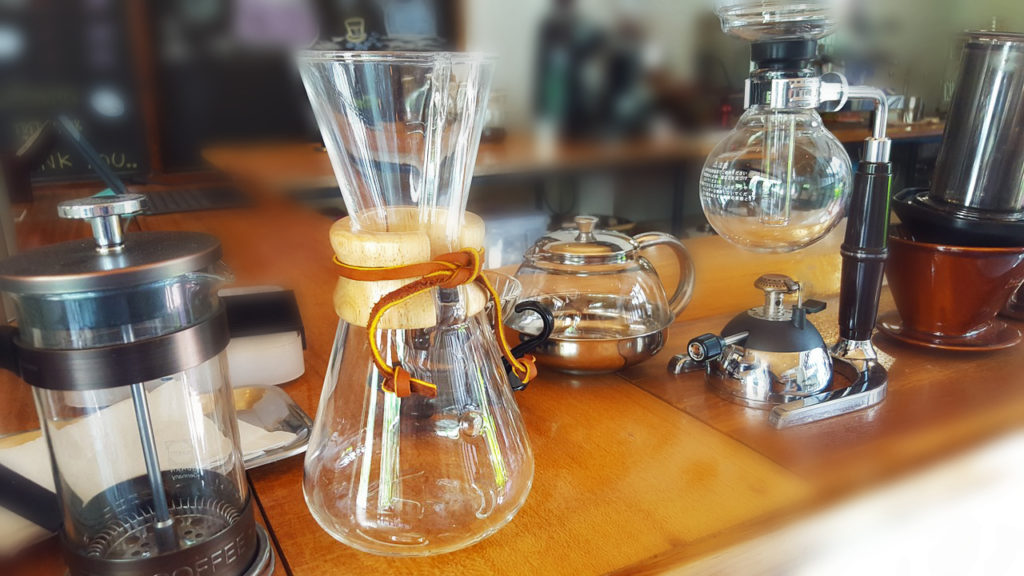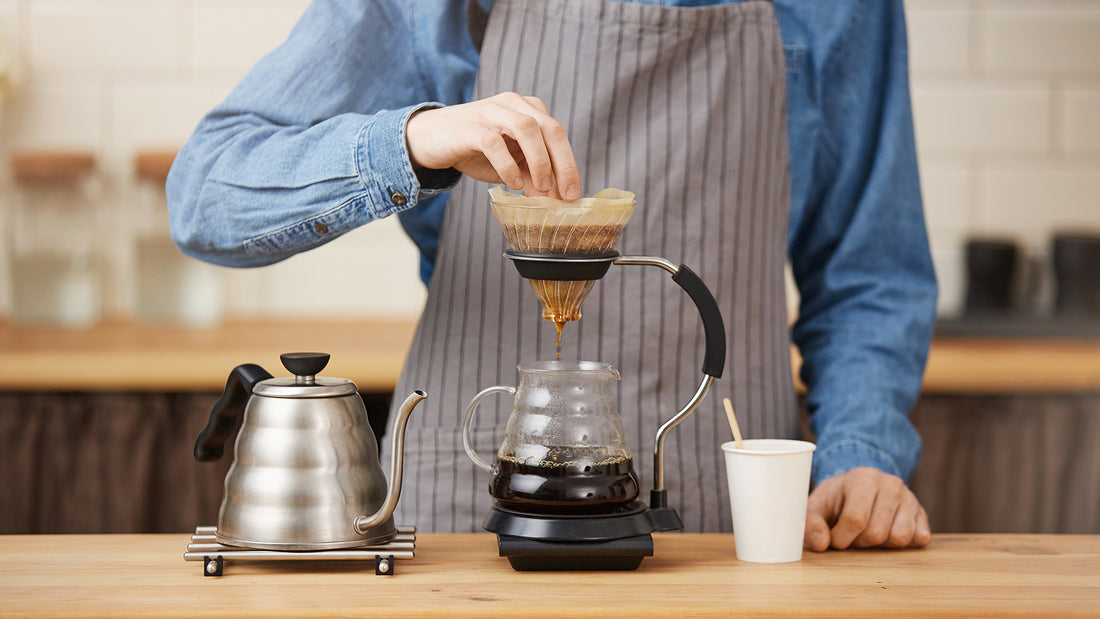The Influence of Various Coffee Brewing Methods on Taste and Aroma
The Influence of Various Coffee Brewing Methods on Taste and Aroma
Blog Article
The Scientific Research Behind Coffee Developing: How Temperature and Time Affect Your Drink
Understanding the scientific research behind coffee developing discloses that temperature level and time are not simple variables yet critical elements that determine the drink's flavor account and total top quality. The optimum brewing temperature level usually drops between 195 ° F and 205 ° F, while the period of extraction differs substantially throughout different approaches. This interaction of variables can result in a cup that is either fascinating or frustrating. As we discover the nuances of these components, the inquiry emerges: how can one properly balance temperature level and time to achieve that excellent mixture?
The Chemistry of Coffee Removal
The chemistry of coffee extraction explores the elaborate processes that change raw coffee beans right into the fragrant drink enjoyed worldwide. This change largely entails the solubility of numerous compounds present in the beans, which are affected by factors such as work dimension, water top quality, and the developing technique employed.
Throughout the developing procedure, hot water acts as a solvent, drawing out soluble compounds, including high levels of caffeine, lipids, sugars, and acids, from the coffee grounds. Each substance adds to the flavor profile, scent, and body of the final drink. Acids are liable for tasty and intense notes, while oils contribute to an abundant mouthfeel.
The initial stages of developing extract acids and sugars, leading to a pleasant acidity, while prolonged extraction can lead to anger due to over-extraction of unwanted compounds. Comprehending these chemical interactions is critical for optimizing developing strategies, as the balance in between extraction time and water temperature can dramatically influence the overall quality of the coffee.
Ideal Developing Temperatures
Locating the ideal brewing temperature is essential for opening the complete possibility of coffee flavors and aromas - coffee brewing methods. Study suggests that the optimal range for developing coffee exists between 195 ° F to 205 ° F(90 ° C to 96 ° C) Within this array, the extraction process effectively liquifies the preferable soluble compounds in coffee beans, bring about a flavorful and well balanced cup
Developing at lower temperature levels, such as below 195 ° F(90 ° C ), might cause under-extraction, yielding a weak and acidic brew with low-key tastes. On the other hand, brewing at temperatures going beyond 205 ° F(96 ° C) can result in over-extraction, producing a severe and bitter taste as a result of the extreme dissolution of undesirable substances, such as tannins.
Additionally, the optimal brewing temperature level can vary relying on the coffee bean kind and roast degree. Lighter roasts frequently profit from slightly higher temperatures to boost their intricate flavor accounts, while darker roasts might be better fit to reduced temperatures to alleviate anger.
Inevitably, preserving accuracy in brewing temperatures is important for attaining an unified equilibrium of flavors, guaranteeing that every cup of coffee delivers an enjoyable sensory experience.
Influence of Brewing Time
Developing time plays a pivotal role in figuring out the flavor account and overall high quality of coffee. The extraction procedure, which influences the preference, fragrance, and body of the beverage, is greatly dependent on how much time the coffee grounds touch with water. Much shorter brewing times can lead to under-extraction, causing a sour or weak flavor, as insufficient soluble compounds are liquified. Alternatively, prolonged developing can cause over-extraction, where unfavorable compounds are released, causing a bitter or astringent preference.
Optimum developing time differs depending on the approach made use of and the grind size of the coffee. For circumstances, a French press typically calls for regarding four mins, while espresso removal is typically finished within 25 to 30 seconds. It is vital to adjust brewing time in combination with other variables, such as water temperature level and coffee-to-water ratio, to attain the preferred taste profile.
Recognizing the effect of developing time allows coffee fanatics to fine-tune their developing techniques, inevitably improving the sensory experience of their mug (coffee brewing methods). With cautious focus to this variable, one can unlock the full possibility of the coffee, exposing its unique attributes and subtleties
Brewing Approaches and Their Results

For circumstances, methods like French press and chilly brew enable a much longer steeping time, causing a fuller body and robust flavor as a result of increased extraction of oils and soluble solids. On the other hand, coffee brewing utilizes high pressure and a shorter extraction time, producing a concentrated shot that stresses extreme tastes and a rich crema.
Pour-over techniques, such as Chemex or V60, provide a more regulated removal procedure, permitting the maker to adjust flow rate and water circulation, which can boost brightness and quality. Meanwhile, percolation approaches cycle water with the coffee grounds several times, bring about a stronger, commonly bitter taste.
Last but not least, making use of paper filters versus metal filters can also influence the last preference; paper filters typically generate a cleaner cup by trapping oils and great particles, while steel filters permit even more oils to travel through, adding to a fuller mouthfeel - coffee brewing methods. Comprehending these nuances can boost the coffee experience substantially
Tips for Improving Your Mixture
A well-executed brew can change even the most basic coffee into an impressive experience. Grind the beans simply before making to take full advantage of freshness, making certain the work size matches your developing method-- coarser for French press and finer for espresso.
Water top quality plays an essential role; use filteringed system water devoid of contaminations. The optimal developing temperature level official site ranges between 195 ° F and 205 ° F(90 ° C to 96 ° C ) Also hot can swelter the coffee, while also trendy may under-extract tastes.
Timing is equally essential. For immersion approaches, soaking for three to 5 minutes is ideal, whereas drip approaches generally take about 5 mins. Experiment with mixture times to find your favored toughness.

Conclusion
In summary, the intricate partnership in between temperature level and time is vital in the coffee brewing process. Recognizing these clinical principles empowers people to improve their brewing techniques, eventually leading to an extra well balanced and enjoyable coffee experience.
Recognizing the scientific research behind coffee developing reveals that temperature level and time are not mere variables yet essential elements that determine blog here the beverage's taste profile and total high quality. Understanding these chemical communications is important for optimizing developing techniques, as the equilibrium in between removal time and water temperature can significantly influence the total high quality of the coffee.Developing time plays a critical duty in establishing the flavor profile and total quality of coffee. By concentrating on these elements-- bean high quality, grind dimension, water temperature, soaking time, and ratio-- you can raise your coffee developing process, resulting in a consistently remarkable cup.
In summary, the detailed relationship in between temperature level and time is critical in the coffee developing procedure.
Report this page